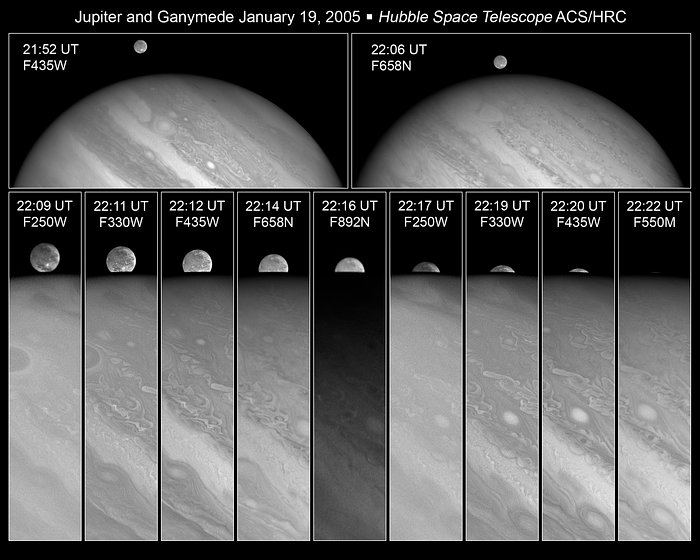Ganymede disappears behind Jupiter
This series of images taken with the NASA/ESA Hubble Space Telescope shows Jupiter's largest moon, Ganymede, disappearing behind the planet.
Ganymede completes an orbit around Jupiter every seven days. Because Ganymede's orbit is tilted nearly edge-on to Earth, it routinely can be seen playing a game of "peek-a- boo", passing in front of and disappearing behind its giant host, only to reemerge later. Composed of rock and ice, Ganymede is the largest moon in our Solar System. It is even larger than the planet Mercury.
The top images show Ganymede next to Jupiter. The images were taken in blue and red light on 19 Jan. 2005 with Hubble's Advanced Camera for Surveys. The close-up images at bottom follow Ganymede as it ducks behind Jupiter a few minutes later.
Credit:NASA, ESA and E. Karkoschka (University of Arizona)
About the Image
About the Object
| Name: | Ganymede, Jupiter |
|---|---|
| Type: | Solar System : Planet : Type : Gas Giant Solar System : Planet : Satellite |
| Category: | Solar System |
Colours & filters
| Band | Wavelength | Telescope |
|---|---|---|
| Ultraviolet U | 250 nm |
Hubble Space Telescope
ACS |
| Ultraviolet U | 330 nm |
Hubble Space Telescope
ACS |
| Optical B | 435 nm |
Hubble Space Telescope
ACS |
| Optical V | 550 nm |
Hubble Space Telescope
ACS |
| Optical R | 658 nm |
Hubble Space Telescope
ACS |
| Infrared I | 892 nm |
Hubble Space Telescope
ACS |
